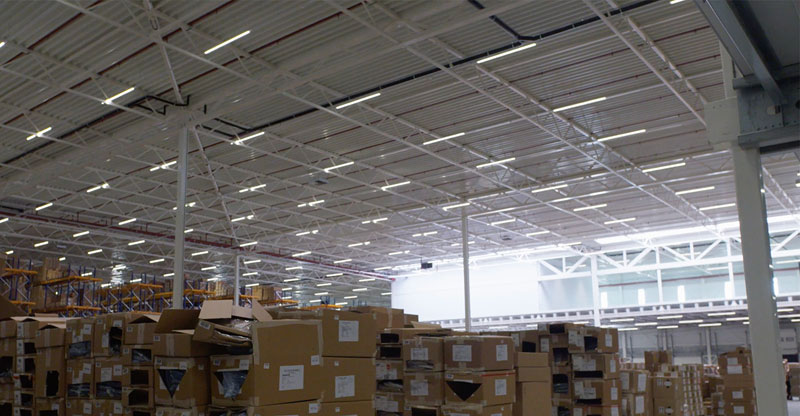TRILUX’s Innovative Light as a Service Financing Model Creates New Opportunities for electronic control systems specialist
Wiesheu Elektronik, a specialist in the development and manufacturing of electronic control systems for industrial applications, has recently undergone a lighting transformation of their 2,000 m2 head office in Burgstetten, Germany, thanks to TRILUX’s innovative Light as a Service rental model.
The project, which aimed to convert the lighting of the storage and production areas and its new office building, was completed with minimal effort and investment by Wiesheu Elektronik.
Wiesheu Elektronik took advantage of TRILUX’s Light as a Service rental model. This innovative financing option allows clients to enjoy modern, energy-efficient lighting systems without the burden of high investment costs. This model involves TRILUX planning, installing, and operating the lighting system, including all service and maintenance tasks. The client, in this case, Wiesheu Elektronik, rents the new lighting for seven years for an agreed monthly fee.
“We can enjoy a state-of-the-art, smart lighting system without any investment or risks since we are only dealing with fixed, calculable monthly costs,” explains Arndt Wiesheu, Managing Director of Wiesheu Elektronik GmbH.
TRILUX’s comprehensive portfolio and a highly competent and committed project team enabled the company to provide Wiesheu Elektronik with a tailor-made, high-quality, and energy-efficient lighting solution. The E-LINE NEXT LED continuous line was installed in the storage and production areas, while the FINEA LED light channel, Luceo Slim free-standing luminaires, and ONPLANA LED and SOLEGRA LED pendants were installed in the offices. All the luminaires are networked and controlled via the LIVE LINK PREMIUM light management system. In addition, daylight and presence detection sensors have been integrated to minimise energy consumption further.
“Our Light as a Service rental model offers seven years of carefree and balance sheet neutral lighting, allowing our clients to enjoy the benefits of a modern lighting system without the burden of high investment costs,” explains Tim Riedel, Project Manager TRILUX sales.
TRILUX is proud to have partnered with Wiesheu Elektronik on this project. It is confident that the Light as a Service rental model will continue to create new opportunities for other companies looking to upgrade their lighting systems.
For more information on TRILUX Industry Solutions, please CLICK HERE


 ding website www.environmentalleader.com reports that while switching to LEDs creates a one-time savings event – typically reducing lighting energy use by up to 50% – integrated sensing and controls can nearly double those energy savings, making controls essential for maximum savings and project economics.
ding website www.environmentalleader.com reports that while switching to LEDs creates a one-time savings event – typically reducing lighting energy use by up to 50% – integrated sensing and controls can nearly double those energy savings, making controls essential for maximum savings and project economics.
